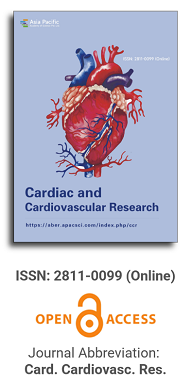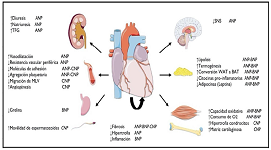
Asia Pacific Academy of Science Pte. Ltd. (APACSCI) specializes in international journal publishing. APACSCI adopts the open access publishing model and provides an important communication bridge for academic groups whose interest fields include engineering, technology, medicine, computer, mathematics, agriculture and forestry, and environment.

Risk factors of pancreatic fistula after resection of pancreatic body and tail duct adenocarcinoma
Vol 3, Issue 1, 2022
Download PDF
Abstract
Objective: To investigate the risk factors of pancreatic fistula after resection of pancreatic body and tail duct adenocarcinoma. Methods: all cases of pancreatic body and tail resection for pancreatic body and tail duct adenocarcinoma in Union Hospital Affiliated to Tongji Medical College of Huazhong University of science and technology from January 2016 to December 2018 were analyzed retrospectively in a single center. The preoperative, intraoperative and postoperative data were collected and analyzed by spssv22.0. The definition and grouping of pancreatic fistula were implemented according to the standards formulated by the international pancreatic fistula research group in 2016. All cases were followed up for at least 3 months. Results: A total of 91 cases were included in the study. The overall pancreatic fistula rate was 25.27% (23/91). No death occurred within 90 days after operation. Three risk factors for pancreatic fistula were identified: Pancreatic texture (soft) [odds ratio = 8.965,95% confidence interval (2.400,33.490), p = 0.001], combined with cardiovascular disease [odds ratio = 9.148,95% confidence interval (1.936,43.225), p = 0.05], albumin <26.50g/l[odds ratio =6.100,95% confidence interval (1.846,20.157), p = 0.003]. Conclusion soft pancreas, complicated with cardiovascular disease and low albumin level on the first day after operation are independent risk factors for pancreatic fistula after operation of pancreatic duct adenocarcinoma. Due to the limitations of the study, the results need to be further verified.
Keywords
References
- Zhang H, Zhu F, Shen M, et al. Systematic review and meta-analysis comparing three techniques for pancreatic remnant closure following distal pancreatectomy. British Journal of Surgery. 2014; 102(1): 4-15. doi: 10.1002/bjs.9653
- Yoshioka R, Saiura A, Koga R, et al. Risk Factors for Clinical Pancreatic Fistula After Distal Pancreatectomy: Analysis of Consecutive 100 Patients. World Journal of Surgery. 2009; 34(1): 121-125. doi: 10.1007/s00268-009-0300-3
- Jang JY, Shin YC, Han Y, et al. Effect of Polyglycolic Acid Mesh for Prevention of Pancreatic Fistula Following Distal Pancreatectomy. JAMA Surgery. 2017; 152(2): 150. doi: 10.1001/jamasurg.2016.3644
- Kowalsky SJ, Zenati MS, Dhir M, et al. Postoperative narcotic use is associated with development of clinically relevant pancreatic fistulas after distal pancreatectomy. Surgery. 2018; 163(4): 747-752. doi: 10.1016/j.surg.2017.10.042
- Wagner M, Gloor B, Ambühl M, et al. Roux-en-Y Drainage of the Pancreatic Stump Decreases Pancreatic Fistula After Distal Pancreatic Resection. Journal of Gastrointestinal Surgery. 2007; 11(3): 303-308. doi: 10.1007/s11605-007-0094-2
- Okada K, Kawai M, Tani M, et al. Isolated Roux‐en‐Y anastomosis of the pancreatic stump in a duct‐to‐mucosa fashion in patients with distal pancreatectomy with en‐bloc celiac axis resection. Journal of Hepato-Biliary-Pancreatic Sciences. 2013; 21(3): 193-198. doi: 10.1002/jhbp.16
- Miyasaka Y, Mori Y, Nakata K, et al. Attempts to prevent postoperative pancreatic fistula after distal pancreatectomy. Surgery Today. 2016; 47(4): 416-424. doi: 10.1007/s00595-016-1367-8
- Li XB, Zhao L, Liao Q, et al. Gastroesophageal Varices (Bleeding) and Splenomegaly. Chinese Medical Journal. 2015; 128(4): 558-561. doi: 10.4103/0366-6999.151118
- Ecker BL, McMillan MT, Allegrini V, et al. Risk Factors and Mitigation Strategies for Pancreatic Fistula After Distal Pancreatectomy. Annals of Surgery. 2019; 269(1): 143-149. doi: 10.1097/sla.0000000000002491
- Ito T, Lee L, Hijioka M, et al. The up‐to‐date review of epidemiological pancreatic neuroendocrine tumors in Japan. Journal of Hepato-Biliary-Pancreatic Sciences. 2015; 22(8): 574-577. doi: 10.1002/jhbp.225
- Lou W, Liu Y, Liang T, et al. Expert consensus on diagnosis, treatment and prevention of common surgical complications after pancreatic surgery. Union Medical Journal. 2017; 8 z1): 139-146.
- Chen W, Gao R, Liu L, et al Summary of China cardiovascular disease report 2015. Chinese Journal of circulation. 2016; 31(6): 521-528.
- Bassi C, Marchegiani G, Dervenis C, et al. The 2016 update of the International Study Group (ISGPS) definition and grading of postoperative pancreatic fistula: 11 Years After. Surgery. 2017; 161(3): 584-591. doi: 10.1016/j.surg.2016.11.014
- Kosaka H, Kuroda N, Suzumura K, et al. Multivariate logistic regression analysis for prediction of clinically relevant pancreatic fistula in the early phase after pancreaticoduodenectomy. Journal of Hepato-Biliary-Pancreatic Sciences. 2013; 21(2): 128-133. doi: 10.1002/jhbp.11
- Hashimoto Y, Traverso LW. After Distal Pancreatectomy Pancreatic Leakage from the Stump of the Pancreas May Be Due to Drain Failure or Pancreatic Ductal Back Pressure. Journal of Gastrointestinal Surgery. 2012; 16(5): 993-1003. doi: 10.1007/s11605-012-1849-y
- Eshmuminov D, Schneider MA, Tschuor C, et al. Systematic review and meta-analysis of postoperative pancreatic fistula rates using the updated 2016 International Study Group Pancreatic Fistula definition in patients undergoing pancreatic resection with soft and hard pancreatic texture. HPB. 2018; 20(11): 992-1003. doi: 10.1016/j.hpb.2018.04.003
- Takahashi H, Ogawa H, Ohigashi H, et al. Preoperative chemoradiation reduces the risk of pancreatic fistula after distal pancreatectomy for pancreatic adenocarcinoma. Surgery. 2011; 150(3): 547-556. doi: 10.1016/j.surg.2011.03.001
- Pachathundikandi SK, Varghese ET. Blood zinc protoporphyrin, serum total protein, and total cholesterol levels in automobile workshop workers in relation to lead toxicity: Our experience. Indian Journal of Clinical Biochemistry. 2006; 21(2): 114-117. doi: 10.1007/bf02912924
- Sleep D. Albumin and its application in drug delivery. Expert Opinion on Drug Delivery. 2014; 12(5): 793-812. doi: 10.1517/17425247.2015.993313
- Merlot AM, Kalinowski DS, Richardson DR. Unraveling themysteries of serum albumin-more than just a serum protein. Frontiers in Physiology. 2014; 5. doi: 10.3389/fphys.2014.00299
- An Q, Yu T, Cao X, et al. Comparative analysis of postoperative complications on elderly colorectal cancer patients over 65years with and without comorbid cardiovascular diseases. Chin J Gastrointest Surg. 2016; 19(9): 1035-1039.
- Sluimer JC, Daemen MJ. Novel concepts in atherogenesis: angiogenesis and hypoxia in atherosclerosis. The Journal of Pathology. 2009; 218(1): 7-29. doi: 10.1002/path.2518
Supporting Agencies
Copyright (c) 2022 Jian Shen, Yushun Zhang, Feng Guo, Jin Hu, Heshui Hu

This work is licensed under a Creative Commons Attribution 4.0 International License.

This site is licensed under a Creative Commons Attribution 4.0 International License (CC BY 4.0).

Prof. Prakash Deedwania
University of California,
San Francisco, United States




